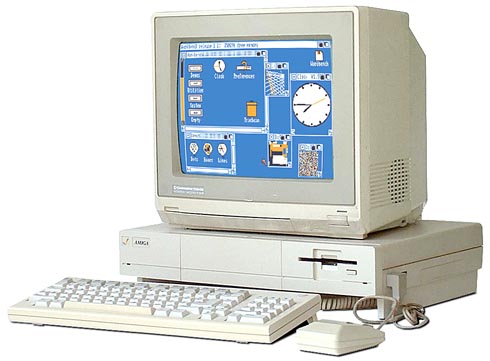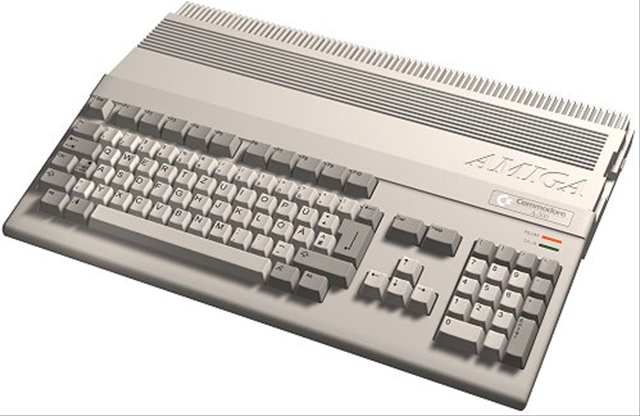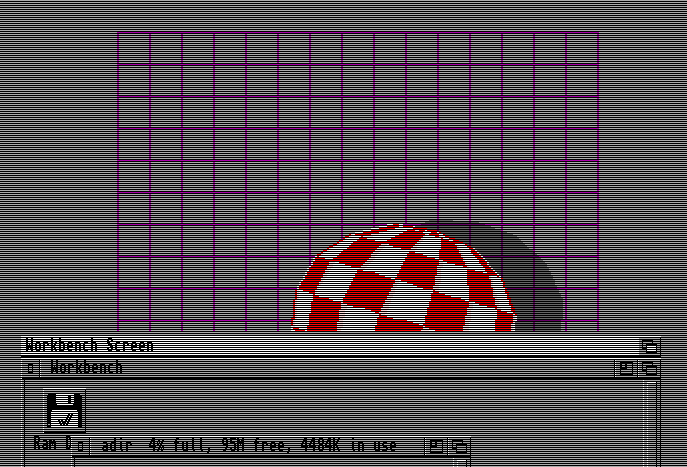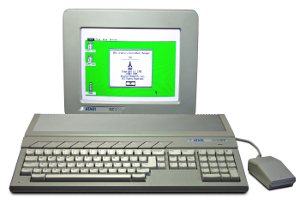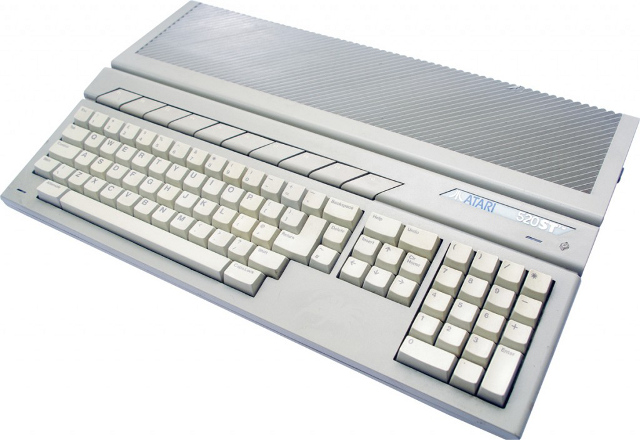|
|
68000 computer systems
|
Motorola 68000 CPU68000 was the best CISC microprocessor design. Architecturally, 68000 was a 32-bit CPU, as its registers were 32-bits (though data bus was 16-bits). Although a CISC microprocessor, its instruction-set was well-designed, lucid, practical. Instruction-set was "orthogonal" as all addressing modes were available in most instructions. Memory model was 32-bit directly-addressed. 68000 had a 24-bit (16MB) physical address space. Privilege level model was simple. Difference in supervisor mode was a supervisor SP and access to interrupt controls. As 68000 architecture was designed right from its beginning, it didn't change fundamentally across generations (68000, 68020, 68030, 68040, 68060). 68000 registers: D0..D7 data registers A0..A6 address registers A7/USP stack pointer (user mode) A7/SSP stack pointer (supervisor mode) CCR flags register |
Commodore Amiga
Amiga was far ahead of its time in ~1985. A 32-bit operating-system with an iconic GUI and preemptive multi-tasking capabilities didn't appear until IBM released OS/2 2.0 in 1992.
AmigaOS had unique ability to run programs behind its desktop, then user pulled down desktop. Window manipulation may seem strange, as windows were pushed behind others or one was popped to top. |
Atari ST
"ST" meant "Sixteen Thirty-Two", a reference to its 16/32-bit 68000 CPU. ST was developed quickly, less than a year, using off-the-shelf components. Operating-system consisted of GEM GUI running on top of CP/M-68K. |
Commodore Amiga vs Atari ST
Amiga and Atari ST were the most advanced personal computers in 1985, a new generation in a class by themselves. Both were greatly superior over IBM PC or that monochrome toy made by a fruit company. Although both had 68000 CPUs, their hardware designs were entirely different. Amiga was accelerated by custom chips which were coprocessors. ST was built from available off-the-shelf chips. Multi-tasking was a capability personal computers didn't have until Amiga was introduced. Amiga could preemptively multi-task. ST was single-tasking -- ST's biggest disadvantage. AmigaOS seemed refined, ST GEM seemed basic. Amiga's graphics was fantastic. Amiga had a graphics coprocessor. Amiga games showed more colors than ST games. ST games don't show color gradients, reason was ST's most colorful mode had only 16 colors from a 512 palette. Amiga's most colorful mode had 32 colors from a 4096 palette. Difference between 16 and 32 colors was visually significant. 32 colors was barely enough to make colorful games with some gradients. 16 colors was insufficient, as was also demonstrated by PC games that used EGA mode (16 color). Later Atari STE ("Enhanced") had a blitter and an extended palette, but later Amigas had AGA with 256 colors out of a 256K palette (on par with IBM VGA). Atari ST ran at 8.0 Mhz vs 7.16 Mhz. ST booted quickly as its operating-system was in ROM. ST had a 70Hz monitor which didn't flicker. ST's I/O was fast, floppy drive approached speed of some hard drives. ST had a built-in hard-disk controller. For those who collect antique computers, both have caveats. An ST should be bought with its monitor, because Atari used a proprietary video interface. Amiga's custom and FPGA chips tend to die, indicated by monitor flashing a color. A1000 was the original model, now collectible, but is the most prone to failure, A1000 had so many chips its main-board needed a daughter-board to contain them all. A500 and A1200 were very integrated, probably will be the most long-lived models. In Amiga models that had them, every Amiga clock battery, by now, has ruptured and leaked battery acid onto main-board. In general, common problems in antique computers are ruptured capacitors and failing power supplies, yet so far hasn't happened to this author's 5 Amigas (A1000,A1000,A500,A2000,A1200). |
